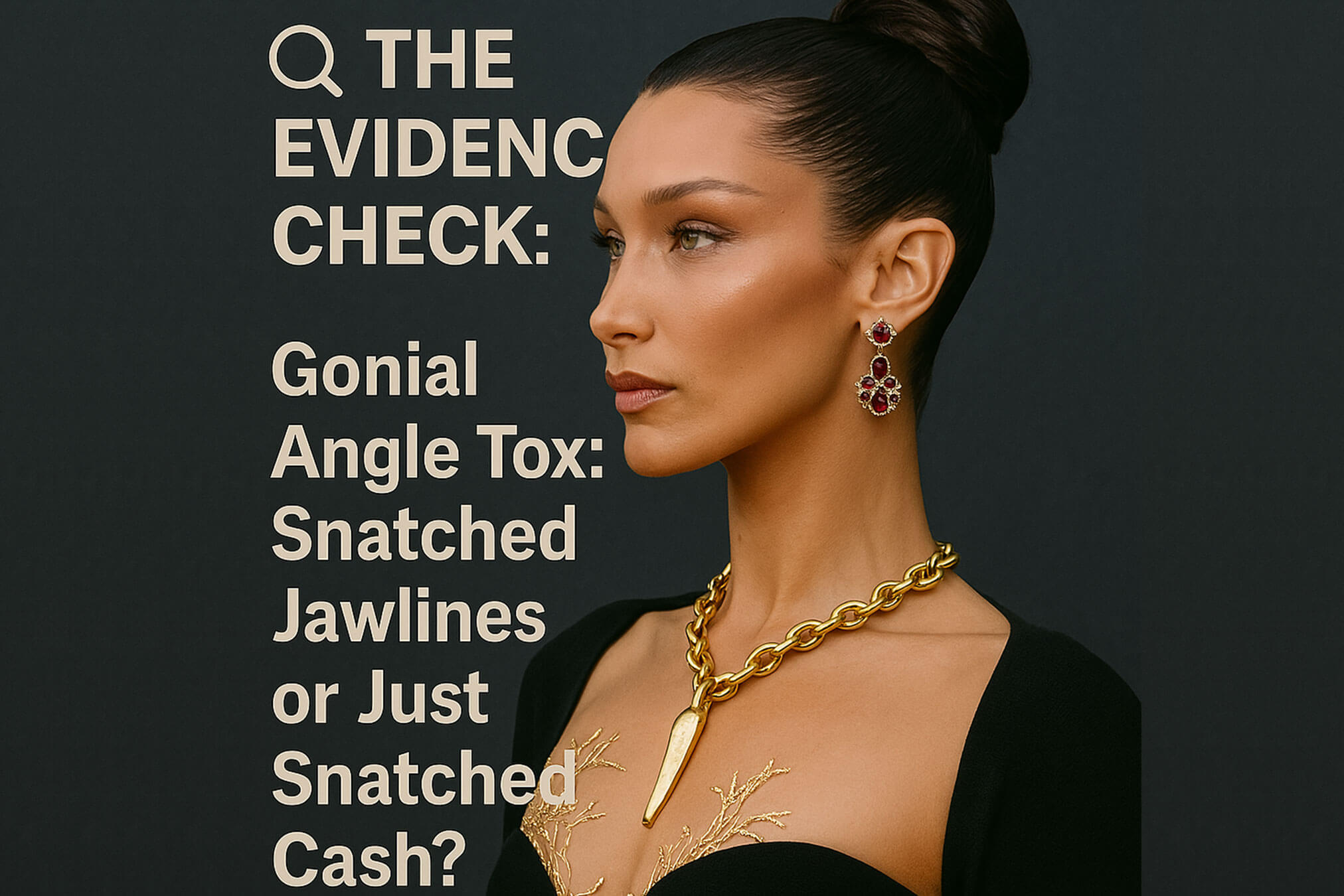The Evidence Check
“Gonial Angle Tox: Snatched Jawlines or Just Snatched Cash?”
Myth Spotlight
“Just a few units of Botox to the back of the jaw and BAM—you’ve got the Nefertiti jawline of dreams.”
At least that’s what half of Instagram is screaming right now.
No filler, no scalpel, no fat removal, no downtime—just a quick jab and you’re suddenly sculpted like a Greek god (or at least like someone who doesn’t eat carbs after 6pm).
This whole “Gonial Angle Tox” trend has popped up like a ptosis complication at a Botox party—everywhere, all at once, often in the wrong hands.
And of course, the KOLs are now monetising it with flashy workshops and £999 “masterclasses” (BTW mine is only £997!!!!!!!) that involve more marketing slides than actual anatomy.
But here’s the question no one’s asking:
Does this sh*t even work the way it’s being sold?
Reality Check
Let’s strip the gloss and get clinical.
The gonial angle is where your mandible makes that sexy corner at the back of the jaw. That angle matters in facial aesthetics—it’s how we frame the jaw-neck separation, how we decide if someone looks sculpted or soggy.
Gonial Angle Tox works not by sculpting but by relaxing the platysma muscle—a thin, superficial sheet that pulls the jawline and lower face downward like an emotionally unavailable ex.
So yes, if done precisely, in patients with:
- Mild lower face sagging
- Decent baseline definition
- Minimal submental fat
The Real Evidence?
You can create a cleaner, more defined jawline.
But let’s be clear:
- It’s subtle. Not a face-lift.
- It’s temporary. 4 to 6 months if you're lucky.
- And it’s wildly oversold by people who don’t know their depressor anguli oris from a resting b****h face.
Also, miss the platysma and hit deeper tissues? Congratulations—you may have just paralysed something you weren’t meant to. Think about it: the larynx, recurrent laryngeal nerve, and vocal cords are in close proximity. Strike too deep or misangle your needle, and you risk affecting phonation or even breathing. Yeah, they’re all loitering nearby.
And don’t get me started on TikTok “injectors” using masseter injection landmarks for platysma work. They’re injecting blind. Injecting fast. And calling the post-procedure swelling “snatched.”
No, love—it’s not defined, it’s just inflamed. The platysma has a superficial, fan-like distribution that runs from the mandibular border down into the upper chest, with no business being approached like a deep, vertical muscle such as the Masseter.
Misplacing your injection can lead to ineffective treatment, asymmetry, or worse—unintended diffusion into deeper structures like the marginal mandibular branch of the facial nerve.
Sparse but promising. A few small studies and anecdotal case series show decent contouring when the platysma’s pulling power is neutralised. But no head-to-head trials, no standardised protocols, and definitely no long-term data.
So why’s everyone jumping on it like it’s the second coming of contour?
Simple.
Because “jawline” sells.
Truth Bomb
Gonial Angle Tox is a useful adjunct.
It’s not useless. But it’s not magic either. And if you’re leading with it as your main jawline solution, you’re either deluded or dishonest.
Here’s the real deal:
- Use it for subtle contouring in the right patient.
- Combine it with filler if structure is missing.
- Add fat dissolving if the submental’s more swamp than sculpture.
- Manage expectations like your life depends on it.
Manage expectations like your life depends on it.
Because if someone walks in asking for “Bella Hadid jaw” and you offer them 4 units of BoNTA at the gonial angle? That’s not aesthetic medicine. That’s aesthetic gaslighting.
Because the platysma can only do so much lifting when everything else is sinking.
Still think it’s a solo treatment? Or time to start talking combos, not quick fixes?
Because the platysma can only do so much lifting when everything else is sinking.


